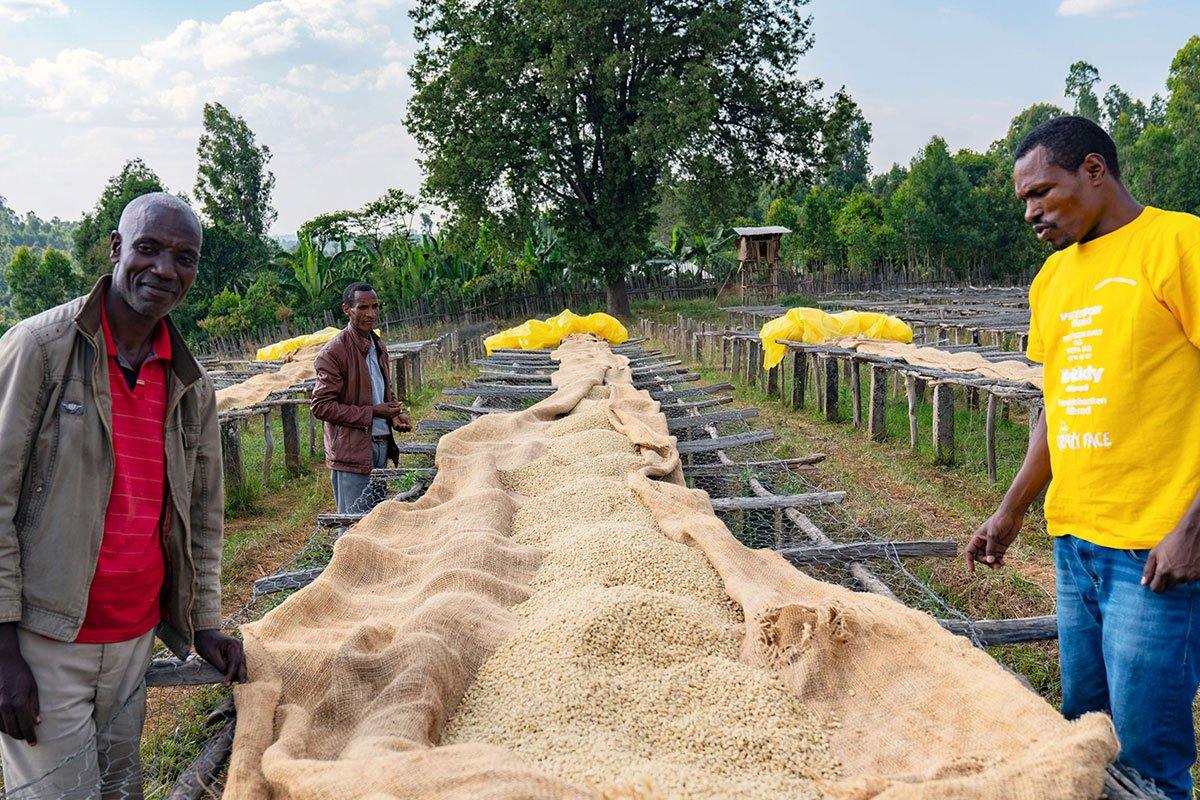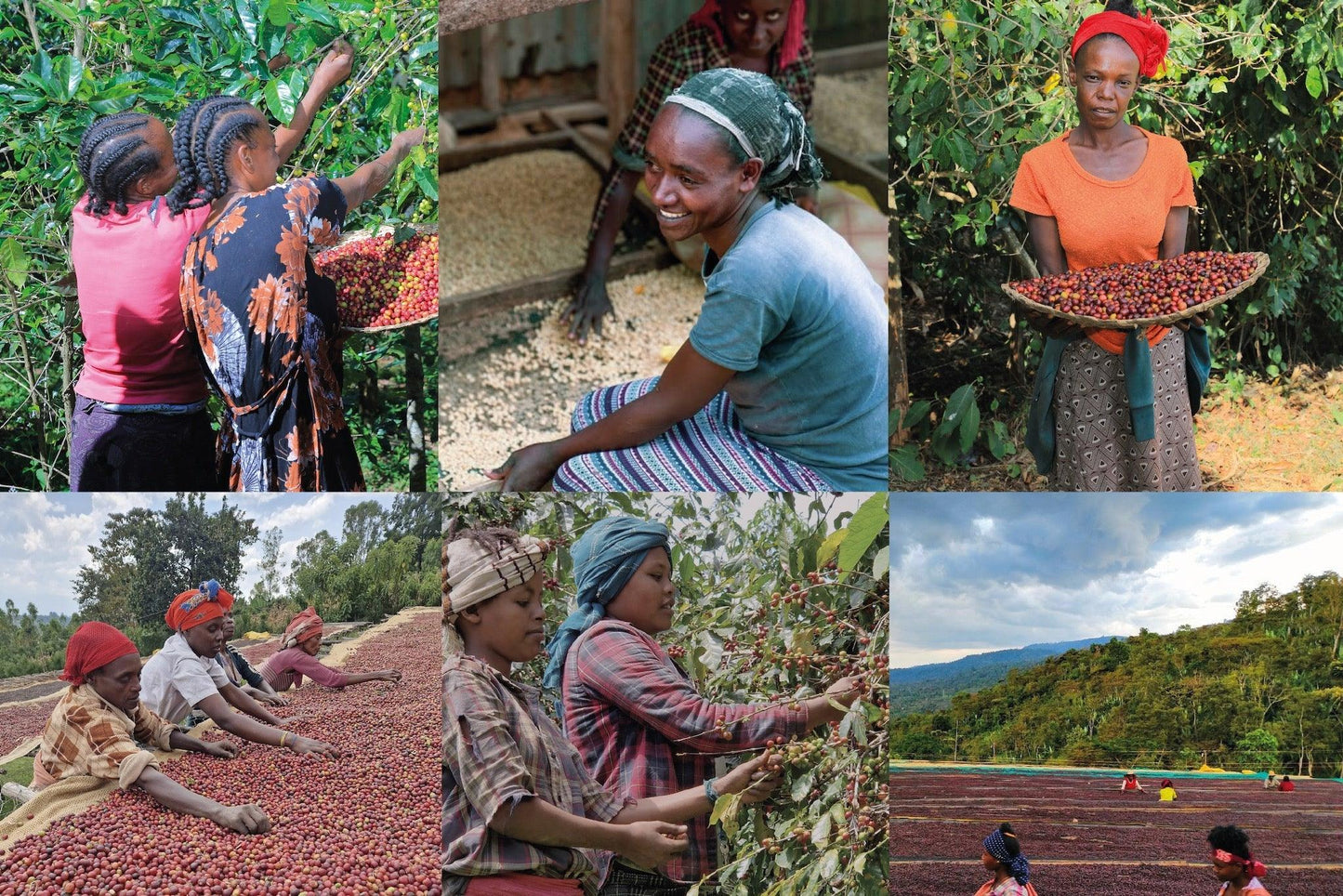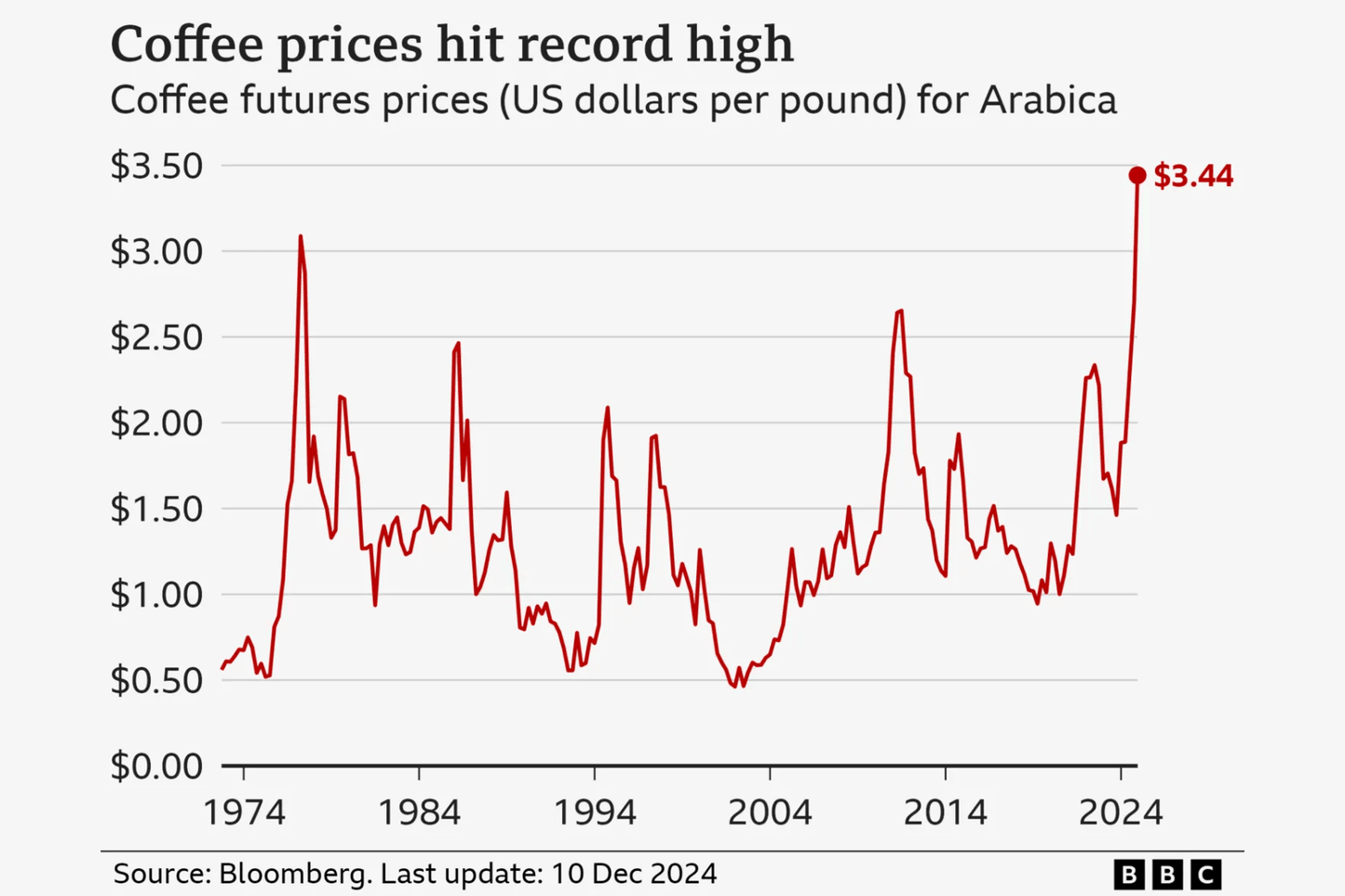Chances are, you already heard about coffee processing methods without realizing it. This is especially true since coffee roasters like to throw words like “washed” or “pulped” beside coffee descriptions. Ever wondered why it is specified that the coffee is “washed” when obviously the beans were washed before ending in our cup, right?
Well, the affair is a little bit more complex than that – as usual with everything related to coffee, you may say. But processing is a crucial element in making your coffee taste as it does in your cup. Understanding it may help you navigate the world of coffee a lot easier.
And because we are on a mission to help you on your coffee lover journey by giving you all the knowledge needed to enjoy it, here is the best beginner-friendly guide to coffee processing methods we pulled together just for you.
Fair warning: it’s a long one. But we promise, after reading it, you’ll be a pro at coffee processing. So grab a seat, get comfy, and let’s dive right into it.
COFFEE PROCESSING
First things first. What does coffee processing actually mean?
By “coffee processing,” we refer to the act of removing the beans from the coffee cherry. For those of you who didn’t know, the coffee we drink comes from the bean inside the coffee cherry, which is a fruit growing on coffee plants. Basically,the beans we brew coffee from are the seeds inside the coffee cherry. These seeds are protected by a whole of flesh, or mucilage, surrounded by the pulp and the protective outer skin.
There are several ways to remove the beans from the cherry, and they all affect the flavors of the beans in different ways, changing the sweetness, the body, or the acidity of the coffee. That is why coffee processing is a crucial step: it will play a huge role in the profile of the final cup.
Coffee processing also allows keeping the coffee beans longer, as bad processing can lead to defects. So yes, all coffee is processed before being drunk, though not in the same ways, as some techniques are more costly than others.
We know there are gazillions (okay, maybe not that many) of processing methods out there, especially since farmers like to experiment and create new processing methods. But for the sake of your eyes and our sanity, we decided to stick to the most common ones: natural, washed, semi-washed, pulped, and honey processes.
We tried to gather as much information as possible in one somewhat detailed but readable article, so you wouldn’t have to do it.
NATURAL PROCESSING (also called dry method or sundried processing)
This method, born in Ethiopia, is one of the most traditional and dated ones. Its specificity is that the freshly picked cherries are left to dry whole, with the bean still inside, so it has long contact with its sugars and the mucilage. The beans ferment and absorb the essence and aromas of the drying fruit. As a result, natural coffees tend to be sweeter, low in acidity, full-bodied, with a wide range of intense flavors from fruity, syrupy aromas to wine-like, fermented notes.
The step-by-step process is roughly as follows:
First, the cherries are picked when ripe, then sorted out to throw away the damaged or flawed cherries. They are washed to remove the dirt and other detritus by being winnowed in a large sieve where the waste can be picked out by hand or separated by flotation in a washing channel.
Once clean, the cherries are dried by laying them out on tables in the sun. They are frequently turned to ensure even fermentation and prevent them from spoiling. Drying is a crucial step as the beans must reach an optimal internal moisture level (around 10 to 12%). If they are over-dried, they can become brittle and break down too easily: as a result, they won’t be included in a batch as they are considered defective. But if they are over-moistened, the beans could be prone to illnesses such as fungus.
After several weeks – between three to six depending on weather conditions, the dried cherries are stored in special silos until they are sent to the mill. There, they will be dehulled by a machine, which means the fruit is removed from the cherry only to leave the green bean.
As you can imagine, the natural process can only be used in countries primarily exposed to the sun and with no rainfall during the harvest season. It won’t be a surprise then that this method is widely used in African and Latin American countries such as Ethiopia, Yemen, Brazil, Ecuador, and Paraguay.
Although cups can be inconsistent and hard to master, this process has several benefits when done properly. The first one is its price: it’s cheaper than wet processing and can be used in poorer coffee-producing regions. It can also be used in regions with limited access to water, as it requires way less than wet processing.
And finally, as explained earlier, the cup profiles resulting from this process tend to be strong in flavors, sometimes unusual even, and cannot be found with washed coffees. That’s why coffee lovers look for natural coffees: they can show a coffee terroir through their flavors.

WASHED PROCESSING (also called wet processing)
As you have probably guessed by the name, this method uses the most water. Lots of coffee producers use this method because of its consistency and, therefore, the reliability of its results. Baristas and roasters also highly appreciate washed coffees for their fresh, bright, and extremely clean cup. They are light-bodied coffees with complex, crisp flavors and high acidity. They share the fruity aromas of natural processed coffees, though the notes in washed coffees are easier to differentiate because of their brightness.
The process starts like the others, with picking the ripe cherries and sorting them in a floatation tank. The unripe cherries will float at the top, and the ripe ones will sink, making it easy to sort them.
Then, to preserve the flavors of the coffee beans, the depulping process takes place: they are extracted from the pulp as soon as possible – best is on the day they were picked. They are fermented in water tanks between 18 to 36 hours, depending on the climate – the hotter, the shorter the fermentation. This will break down the rest of the pulp sticking to the seeds, which will be eliminated when the beans are washed and clean once fermentation is over. This way, only the parchment is left around the beans.
Once soaked, the cherries are dried following two methods. The first one is similar to the dry process and the most used one: the beans are spread out on beds or tables in the sun for one to two weeks and must be frequently turned for the beans to dry evenly. The second way is to dry the beans with a hot-air drying machine that makes the whole process faster, though the beans must be watched closely to prevent any accidental damage.
To finish, the beans are then dehulled to remove the last dry and crumbly layer, the parchment, leaving us with the precious beans.
This method is very water-costly, but it leads to great consistency between batches, and only a few coffee beans are defective. It is used in many Latin American countries and some African countries like Kenya and Ethiopia. It also has the benefits of being quicker than the natural process, though the speed will depend on climate and weather conditions, with the downside of wasting a lot of water, if it is not reused.
SEMI WASHED PROCESSING (also known as semi-dry and wet hulling)
The semi-washed process originates from Southeast Asia, precisely from Sumatra, and is mainly used there, as the humid weather makes it difficult to dry the coffee. Called giling basah in Indonesia, this method is similar to the washed process but quicker and more efficient, as it requires half the drying time of other methods. It results in earthy, rustic cups and chocolaty, nutty aromas. Semi-washed coffees have less acidity than washed coffees and have a heavier body, with woody, spicy notes.
It all starts with picking the ripe coffee cherries and sorting them in a water tank. A pulping machine will then remove a part of the pulp, leaving the mucilage on. The cherries are then fermented for a few hours, two days at best, in plastic tanks that retain moisture before being rewashed to remove the pulp altogether. The beans are dried out again, and they retain some aromas of their drying surface that give these coffees their earthy flavors so prized by coffee enthusiasts.
THE PULPED AND HONEY PROCESSES
Now, we enter the murky territory. The following two methods, the pulped and honey processes, are really close. Some even consider pulped and honey processes to be the same, especially since both methods produce a similar cup profile regarded as a good in-between natural and wet coffees: more uniform and cleaner than natural ones, but less acidic than the wet ones
Honey and pulped processes could be considered as one family, with the pulped method being the parent of the honey process. But as each technique has its specificities (albeit small) and different objectives, we decided to consider them as two separate categories.
Pulped processing (also called pulped natural method)
First, let’s talk about the pulped process. Just like the semi-washed method, it sits in the middle of washed and dry processes. It is mainly used in Brazil and was created to produce a clean cup while reducing water use and speeding up the natural process.
The coffee cherries are picked when ripe, then sorted in a floatation tank to remove the floating unripe ones. Then, most of the fruit is removed, and the beans are dried out for two-three weeks. This way, the beans dry quicker than if processed with the dry method. The rest of the pulp is removed during the dehulling stage to reveal the green beans finally.
Pulped processed coffees are usually full-bodied, clean cups but contrary to washed coffees, pulped coffees are low in acidity, sweet, with nutty, chocolaty, and cocoa notes.
Although their flavor profiles are similar to honey-processed coffees, the latter has many more nuances in flavors. That’s one of the reasons we consider them a different category than pulped coffees.
Honey process
Let’s get the joke out once and for all: no, there is no honey involved in this process, despite the very misleading name. The name comes from the layer of mucilage kept around the beans that looks golden and sugary and from the sweet, clean cup this method produces. As you can guess, honey processed coffees are balanced, low in acidity, earthy undertones, and have plum, cherry, and nutty tones.
An important note before getting into details: there is no fixed version of the honey process. The whole point of this method is to experiment with the washing and drying to get the wanted taste in the final product.
Honey processing is a hybrid of the wet and natural methods, and its steps are almost identical to the pulped process. Once the cherries are picked and sorted in a floatation tank, the skin and most of the pulp are removed, leaving the mucilage.
That’s where things get interesting for honey-processed coffees: the amount of mucilage left is what will determine the sweetness of the resulting coffee. This is what makes us separate honey from pulped coffees, as honey coffees have more nuances in their final cup than pulped ones. The beans are not fermented but instead dried out for two to three weeks to absorb the sugar from the mucilage. The drying step is the most crucial one, as the beans must dry quickly enough without fermenting but too quickly that flavors can’t develop. Then, they are dehulled, and voila: you get beautiful honey processed green beans.
This process is mainly used in Costa Rica and other Central American countries to affect the taste of the final cup, and not so much to speed up the process like in Brazil. It is also less used than the wet and natural methods, for it involves a lot more work and care, especially for the drying stage.
White, yellow, gold, red and black honey
Now, a little note on some indications you might see next time you go shopping for honey processed coffees.
Maybe you have already noticed the colors white, yellow, gold, red and black inscribed on a honey processed coffee packaging, and thought “what the hell?” We’re here to tell you that no, this isn’t some secret code of the industry, but an indication of the taste of your beans.
These colors can mean different things depending on the farmer, but there is one main definition: the color indicates the amount of flesh left on the bean when they dried. And this time, the colors don’t come out of nowhere: the beans change color when drying, as the mucilage oxidizes and darkens, from being golden at the start to red then black.
White honey has the least amount of mucilage, making them the closest in taste to washed coffees. Yellow honey has slightly more mucilage than white honey, both resulting in a clean cup. Red and black honey has the most flesh left on the beans, so they taste more like natural processed coffees.
Gold, red and black also indicates different drying time and sun exposure. Gold honey is dried more quickly, as the beans are dried under sunny weather and retain little humidity. Red honey dried under more shade to slow down the process, giving them a higher moisture level, and black honey is dried out the longest under more shade. The longer drying time allows the beans to develop more fruity tones.
These dark honey demand a lot of work and almost constant monitoring to prevent the beans from fermenting too much and developing mold or fungus. But the final taste is out of this world (some say you can almost taste a honey flavor), and they tend to be perfect for espresso. They are definitely worth the effort.
Honey processing is still relatively new and under many experimentations. Nothing is set in stone yet, so it is best to ask your roaster about the processing method, this way, you’ll know exactly what you’re getting.
Still there? Congrats (and thanks for sticking with us). This was a lot of information to digest. Hopefully, you now have a better grasp of the different coffee processing methods and what they mean for your coffee.
But most importantly, we hope reading this article gave you a better understanding of all the work that goes into producing coffee. It is such a common goods now that it tends to be overlooked. Our aim is to highlight the efforts it took to give specific flavors to specific beans, so the public can better appreciate them.
Have you got curious after reading the whole article and ready to experiment with new coffee flavors? Head to our shop to discover our Ethiopian coffees, all processed differently depending on their origin. You can even choose the roast profile and grind to compose your perfect cup at home!





